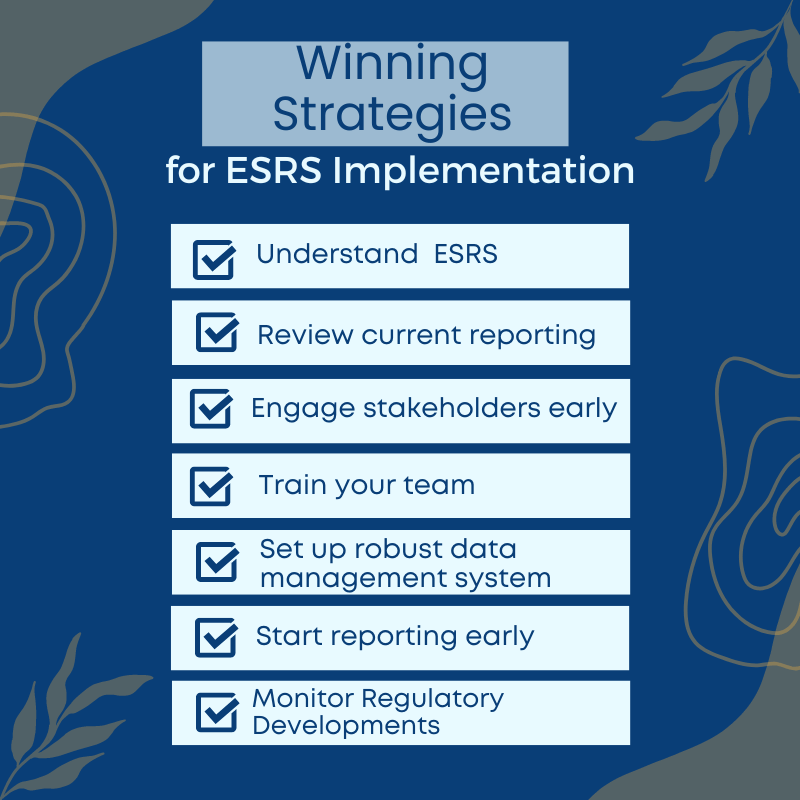EFRAG just published a draft Implementation Guide on Double Materiality Assessment (DMA). Below is a short summary of the guidance document.
The Double Materiality Assessment is a crucial tool that identifies material matters and material information to be reported in a company’s sustainability statement. Its primary focus is to identify all impacts, risks, and opportunities (IROs) that are deemed material from both the impact materiality perspective and the financial materiality perspective.
Objective
The purpose of this guide is to assist company employees who are responsible for implementing the Double Materiality Assessment as mandated by the EU Directive 2013/34/EU (the “Accounting Directive”), as amended by the Corporate Sustainability Reporting Directive (CSRD). This document is based on the July 2023 Delegated Act on ESRS and serves as an instructional material on how to perform the assessment without introducing new provisions beyond the content of the Delegated Act.
What is the Double Materiality Assessment?
The Double Materiality Assessment is the process by which the undertaking determines material matters and material information to be reported in its sustainability statement. The assessment is not limited to the undertaking’s own operations but also includes its upstream and downstream value chain.
- Recap on the Concept of Double Materiality – It pertains to the two types of materiality that are considered: impact materiality and financial materiality. These are assessed based on the significance of the information related to the matter and its decision-usefulness.
- The Materiality Assessment – It involves identifying all material impacts, risks, and opportunities and consequently excluding those that are not material.
- Understanding Key Concepts for the Materiality Assessment – The assessment process involves understanding matters, topics, and IROs, understanding the need for the assessment, and how it is performed.
Materiality Assessment – Why Is It Needed?
The assessment is needed for the identification of all material impacts, risks, and opportunities of the undertaking. It helps in setting criteria for identifying material information and defines the scope of application of materiality information. It also assists in deriving data points from EU legislation and considering upstream/downstream value chain considerations.
Materiality Assessment – How Is It Performed?
The assessment process includes:
- Step A – Understanding the context and defining the stakeholder engagement strategy.
- Step B – Identifying the list of potential material sustainability matters and impacts, risks, and opportunities.
- Step C – Determining the final list of material matters based on the assessment of the materiality of the IROs.
- Step D – Reporting
- Role and Approach to Stakeholders – It entails seeking input and feedback from stakeholders to understand their concerns and the evidence of actual and potential impacts of the undertaking on people and the environment.
- Setting Thresholds for Impact Materiality – Quantitative and/or qualitative thresholds based on severity for actual negative impacts and severity and likelihood for potential negative impacts are used.
Leveraging Other Sources
The assessment process can leverage other sources such as the GRI Standards, ISSB Standards, and international instruments of due diligence.
Frequently Asked Questions (FAQ)
The guide also includes a section of FAQs that cover topics like impact materiality, financial materiality, the materiality assessment process, stakeholder engagement, aggregation/disaggregation, and reporting.
Conclusion
In conclusion, the Double Materiality Assessment is a fundamental process in sustainability reporting. By identifying material matters and information, the undertaking can report on its sustainability statement with accuracy and relevance. The assessment process involves multiple steps and considerations and can leverage other sources for a comprehensive evaluation. This guide serves as an implementation manual for company employees tasked with conducting the assessment, ensuring that it is performed in accordance with the requirements of the Accounting Directive and the CSRD.
Your Next Step on the CSRD Compliance Journey
Are you ready to spearhead your company’s sustainability journey and stand out from the crowd? The Corporate Sustainability Reporting Directive (CSRD) and European Sustainability Reporting Standards (ESRS) are not only coming but are here, and your next steps are critical.
Mastering the complexities of the CSRD and ESRS can seem like a daunting task. However, overcoming this challenge doesn’t just mean compliance with new laws – it’s an opportunity to show your commitment to a sustainable future, to gain a competitive edge, and to attract stakeholders who value responsibility.
We know it might be overwhelming, but you’re not alone in this journey. Imagine having all the necessary tools, knowledge, and support at your fingertips. That’s where The CSRD Compass steps in. We’re offering a rich collection of resources ranging from insightful articles to comprehensive courses and expert analysis. Navigating this new terrain of sustainability reporting has never been easier!
Don’t wait for tomorrow. The time to act is now. Embark on your sustainability reporting journey today, prepare your business for a sustainable future and make a real impact on our planet. Take our coures to enhance your knowledge of the CSRD and ESRS.


